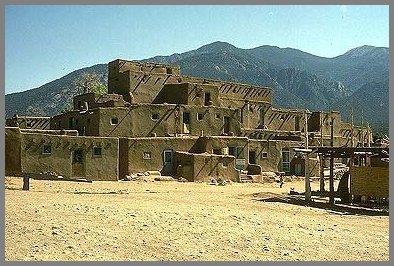The Pueblo (Indians of North America)
The Pueblo is one of a series of books about tribes put out by Chelsea House Publishers in the 1990s. I gather the whole series is out of print. That's a shame.
Here's a description of the series:
Based on the most recent scholarship and written by authorities on the subject, each of the volumes in this highly acclaimed series provides a balanced account of the history of relations between Indians and whites and challenges many still-prevalent myths and stereotypes. The volumes also examine the Native American past before European contact-chapters in the history of Indian peoples that are often overlooked. Each book is profusely illustrated with black-and-white photographs, paintings, and maps.
Written by Alfonso Ortiz, it's nice and accessible. It's only 111 pages, with photos and illustrations on every other page. I read the whole thing in an hour and a half.
There's even an eight-page section of color photographs, including one of the original Newspaper Rock. I hope this section didn't make the books too expensive to publish. It's a nice touch, but it's not necessary.
Ortiz presents just enough information to interest readers without boring them. For instance, he doesn't go into the tribes' summer and winter moieties or their clan and kinship structures. He gives us quotes that show how impressed the Spanish were with the Indians and their villages.
Pueblo point of view
History books, even those written by Indians, tend to be dry and academic. They strive for nonjudgmental neutrality. What makes The Pueblo work is that Ortiz isn't afraid to express an opinion. He almost editorializes about the Indian and Spanish viewpoints, which is good.
Some examples:
Having come to find a treasure in gold an silver, expecting to live on the labor of others, the colonists proved largely unwilling to do the work required to establish a self-supporting settlement--most specifically planting and tending fields and otherwise providing for a reliable source of food.
The friars were generally humorless and unrelenting disciplinarians with little understanding or tolerance of native tradition. For the slightest offenses--failure to attend mass, for example--Indians had their heads shaved, were whipped, or were detained in stocks.
The first 75 pages cover Pueblo history to 1800 or so. The last 36 pages cover 1800 to the present. These final sections are merely good, not great. I don't if Ortiz lost his touch or rushed through the final years. Perhaps this period is too complex and convoluted to describe easily.
Anyway, I'd give the first part of the book a 9.5 of 10 and the second part a 7.5 of 10. Overall rating: 8.5 of 10. This is a great book for schoolchildren or anyone who wants to learn about the pueblos. If the other books in the series are as good, I'd recommend that some publisher reprint them and every school and library buy them.
For more on the subject, see The Best Indian Books.


No comments:
Post a Comment